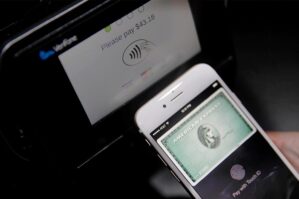In just over a decade, Apple Pay has become a dominant force in U.S. payments, accepted by 85% of retailers compared to only 3% in 2014. A key catalyst was a separate but related change in the country’s payment infrastructure: in 2015, Europay, Mastercard, and Visa mandated the adoption of EMV chips – the gold squares on your credit card allowing you to tap rather than swipe – and, as merchants upgraded terminals, many added NFC, the backbone of Apple Pay. With that tech in place, your iPhone effectively became your credit card. Apple also launched with backing from major banks like Capital One, Chase, and Bank of America, and widespread consumer adoption driven by convenience made it hard for any remaining banks not to support Apple Pay. The result: Apple Pay didn’t just spread – it saturated retail.



